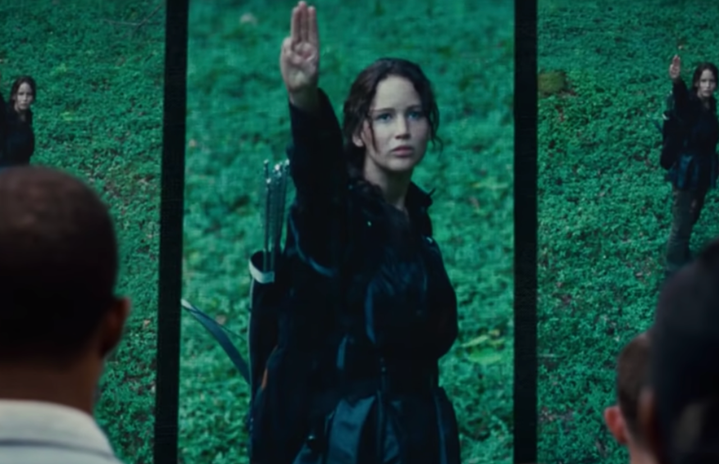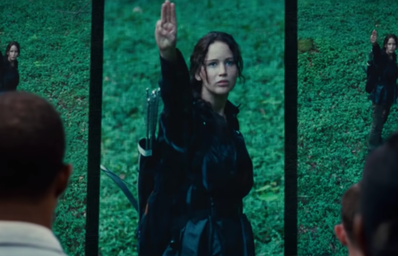If you’re anything like me and have spent the last five years thinking of nothing but The Hunger Games, (even going as far as to travel across the country to camp in the filming location of District 12), then the November 17, 2023 release date of The Hunger Games prequel The Ballad of Songbirds and Snakes film adaptation has had a special mark on your calendar for quite some time.
The Novel
The Ballad of Songbirds and Snakes (TBOSAS) is set sixty-four years before the original Hunger Games trilogy and follows a teenage Coriolanus Snow, the villainous president in the original series, as he participates in the newly developed tribute mentor program at the prestigious Capital Academy that will allow twenty-four of the highest esteemed student the privilege of mentoring one of the district tributes in the tenth annual Hunger Games. Throughout the novel, Snow is forced to face the realities of a world divided by war outside the comfort of privilege which he has grown so accustomed to, and choose which side of history he wants to be on when he mentors Lucy Gray Baird from District 12.
The book deals with many themes ranging from innate human nature, the cost of control, and what the Hunger Games are truly about. Snow is forced to question if the purpose of the Hunger Games is simply to instill fear into the districts to pacify further rebellion like he once believed or if there is something deeper at play.
When I first read the book when it was released back in 2020, I remember feeling like it was going to be difficult to translate some of the stand-out themes into a movie due to the way the novel was written. Author Suzanne Collins made the decision to write The Ballad of Songbirds and Snakes from a third-person point of view with limited perspective focusing only on Snow’s experience. The original Hunger Games trilogy, which followed Katniss Everdeen as she becomes a tribute in the 74th Hunger Games and a figurehead in the subsequent rebellion against the Capitol, was told in a first-person point of view, allowing readers to follow the chain of events through Katniss’s inner monologue. TBOSAS third-person narration allows readers to learn Snow’s origins as an observer rather than through embodiment, thus allowing the readers’ opinions on him to form naturally as you see Snow deal with his primary conflicts.
The Film
Structure and character perspective were what I was the most curious to see come to life on the screen. The movies for the original trilogy shaped the films to stay true to the first-person point of view from the books by keeping the perspective of the story focused on Katniss and her experiences throughout. Director Francis Lawrence, who returned to direct TBOSAS after previously directing some of the Hunger Games films, used other characters and dialogue as a way to fill in information gaps for the film viewers that resulted from Katniss’ inner monologues. For example, in The Hunger Games, other characters such as Head Gamemaker Seneca Crane and host Caesar Flickerman are used to explain and give background information about the story to viewers separate from Katniss’ inner monologue. In TBOSAS, the structure was noticeably different. Staying true to the third-person perspective of the novel the story is being told with Snow as the main character, but not from his point of view. There is, however, a slight variation between the structure of the novel and the film giving perspective and dimension to all major characters, allowing you to see added detail that wasn’t given in the book. The movie also used other characters and dialogue to compensate for the thoughts and subtleties of Snow that couldn’t easily be shown.
Like the original trilogy, TBOSAS is broken up into three distinct parts. However, unlike the films for the trilogy, TBOSAS explicitly breaks up the parts by using brief intermissions to inform the audience that one chapter has ended and another is beginning. This came as a real surprise to me since the original movies never displayed the chapters. In this way, rather than telling the audience, the story always chose to simply connect the parts together allowing for a natural flow. I do think with regards to TBOSAS this was an appropriate decision due to the complexities of the plot and the somewhat abrupt transitions between parts in the book. The use of intermission helps the audience keep a better timeline of events and stay on track.
The film brought forward an extraordinary lead and ensemble cast, with Tom Blyth perfectly portraying the multifaceted complexities of an already well-known character such as Snow. EGOT status holder Viola Davis captured the sinister character and arguably true villain head game maker Dr.Gaul with ease, but the true star of the show was Rachel Zegler playing Lucy Gray Baird. Zegler captured Lucy Gray’s charisma and charm to perfection, and it felt as if the description of the character in the book had suddenly materialized before me. Zegler, whose character is an accomplished folk singer, is able to turn simple lyrics on a page into a full-fledged performance bringing to life everything the reader could have imagined.
Production designer Uli Hanisch does an amazing job re-immersing fans back into the world of Panem, specifically the Capital. The grandiosity of the Capital is depicted with large marble statues and perfectly paved streets, while also showing how even the prominent city is not immune to war with dilapidated buildings still standing from ten years prior. Returning costume designer Trish Summerville adds more outfits to the expansive catalog of iconic Hunger Games costumes. Snow’s academy uniform is sleek, showing off the prestige of the establishment and Lucy Gray’s rainbow reaping dress allows her spirited personality to shine through. Returning composer James Newton Howard delivers a new soundtrack with carefully placed nods to beloved melodies from the previous films that will have seasoned Hunger Games fans beaming with nostalgia.
While the film checks many boxes on the franchise fans list, it’s not without its faults. The film lacks important context when it comes to world-building, especially in the first third of the movie. Viewers who have not gone into it having previously read the book may feel as if they walked in on the middle of something. The film also cuts corners regarding important relationship-building, particularly between Snow and Lucy Gray. The mentor-mentee relationship turns romantic seemingly out of nowhere. Some major plot lines particularly in the second and third acts of the film feel rushed and or changed for simplicity’s sake, and some of Snow’s character development feels a bit glossed over. While many of these drawbacks were anticipated due to the sheer amount of detail and information in the book, the story was still able to be followed in spite of the cuts.
The fans are brought back into the arena in a big way. Unlike the original trilogy, TBOSAS does not shy away from violence and gore. I found myself being startled during particular sequences in the arena despite already knowing what was going to happen. Paying homage to the iconic scene in Catching Fire where Katniss enters the arena as the aspect ratio slowly changes to accommodate an IMAX screen, the arena scenes in TBOSAS are also filmed for an IMAX experience. Familiar themes like mockingjays and the Hanging Tree are given a whole new meaning as viewers learn the origins of both adding an extra layer to what was already known from the original books. The film is full of easter eggs, symbolism, and parallels to the original films that allow fans to dive even deeper into what they thought they already knew. Grammy winner Olivia Rodrigo delivers a haunting song with “Can’t Catch Me Now,” which perfectly encapsulates the overall theme of the story cementing herself among other pop icons such as Taylor Swift and Lorde, who have also performed music for the franchise.
Final Thoughts
Overall, the film was everything I hoped it would be. My excitement for the revival of the franchise could not be understated. With friends and family getting back into the series after years, I was finally able to have the conversations I had been dying to have and share my love for the series with the people in my life. Getting a chance to feel the fandom grow again and have that sense of community was something I had desired for so long. One of the most special things about TBOSAS is that it has a purpose. Unlike other franchises that have added prequels and sequels for a cash grab, this one has the goal of showing viewers how Snow and the world of Panem became what it was. The most special additions were the subtle acknowledgments to Katniss and the previous story, making the world feel complete and satisfying.


